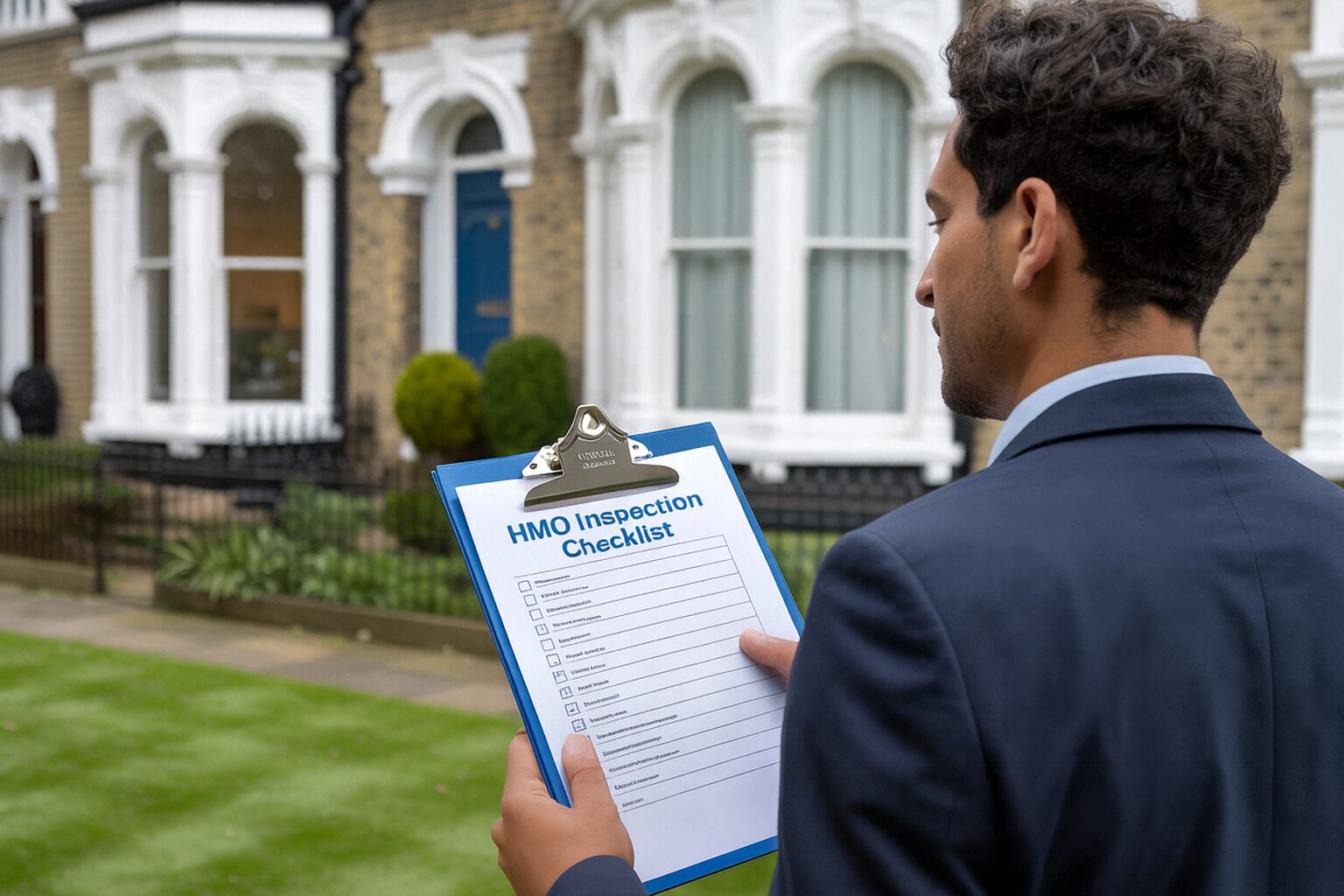
Brighton & Hove is one of the UK’s most popular cities for property investors. According to Brighton and Hove City Council, there are:
- Around 4,200 licensed HMOs out of 134,717 residential dwellings. That’s equivalent to 3.1% or just short of four times the 0.8% figure from the 2021 Census.
- 48,206 private rented properties or 35% of the market, which is nearly double the national average of 19%.
- AirDNA reports that there are 7,836 holiday lets in the city.
This level of demand has created strong competition for space in the city, which has pushed up both property values and rental yields. [Related article: How to work out rental yields]
However, this has also led to a rise in the number of substandard and poorly-managed rental property. In response, the council has tightened both HMO planning and HMO licensing rules. [Related article: 4 New HMO Rules Landlords and Investors Need to Know]
In this article, find out about the current HMO market in Brighton & Hove and the licensing rules that govern it. Discover what planning permission is like in the city and read about local political and planning attitudes to HMOs.
HMO Architects note: A house in multiple occupation (HMO) is a property rented by three or more unrelated persons from two or more households. They share facilities such as kitchens and bathrooms under the Housing Act 2004 and current legislation.
Brighton & Hove Council’s concerning rental report
In 2023, the council engaged Metastreet to write a report on the state of the private rented sector in the city. The report found:
- High HMO concentration: There was high concentration across 23 wards in the city. Particularly affected were areas like Moulsecoomb & Bevendean and Hanover & Elm Grove. The survey concluded that this density put a lot of pressure on local services and the balance of the character of these neighbourhoods.
- Poor conditions: The report estimated that 2,144 of 4,208 HMOs have at least one serious HHSRS hazard. HHSRS stands for the housing health and safety rating system. It’s the tool councils use to identify and protect against potential risks and hazards to health and safety.
- Noise and behaviour: Over five years, the council recorded 576 HMO noise-related anti-social behaviour incidents. The highest counts were in Hanover & Elm Grove and Round Hill areas. The council believed this indicated management challenges in some HMO clusters.
- Landlord complaints: The council records HMO-related service requests and complaints. They found the highest concentration to be in student-heavy and central areas.
These were not the only issues.
According to the report, one in six properties would be likely to have at least one serious HHSRS hazard. An estimated 18% would fail energy efficiency requirements. Affordability was a concern too as was the age of many of the properties for rent.
HMO licensing: new licensing rules in Brighton & Hove
After the council published the report, they expressed the desire to raise standards and improve living conditions for tenants and residents. Another key target was addressing community concerns. The issues in particular they were focusing on were litter, noise and the changing character of certain neighbourhoods.
They launched a public consultation which eventually led to a three-tier licensing scheme for HMOs in Brighton and Hove:
1. Mandatory HMO licensing (borough-wide)
The same national rules apply in Brighton on large HMOs.
If five or more persons from two or more households share kitchen facilities or bathrooms, you need a mandatory licence.
2. Additional licensing (small HMOs)
From 1 July 2024, the council introduced new city-wide additional licensing rules for small HMOs. These new rules cover HMOs where there are three or four tenants.
3. Selective licensing scheme (PRS properties in defined wards)
A selective licensing scheme started on 2nd September 2024, applying to the following areas:
- Kemp Town
- Moulsecoomb & Bevendean
- Queen’s Park
- Whitehawk & Marina
The closing date of the scheme is 1 September 2029. If you let a property in these wards that isn’t subject to mandatory HMO licensing, you may still need a selective licence.
HMO licensing fees
HMO licensing fees for the city are:
Mandatory HMO licence fees where there is a single occupancy
| Type of fee | 5 occupants | 6 to 8 occupants | 9 to 11 occupants | 12 to 14 occupants |
| Standard initial fee | £871 | £891 | £913 | £934 |
| Single discount | £794 | £814 | £836 | £856 |
| Double discount | £716 | £737 | £759 | £779 |
| Late fee | £987 | £1,009 | £1,029 | £1,051 |
| Standard re-license fee | £711 | £721 | £733 | £743 |
| Single discount | £634 | £644 | £656 | £666 |
| Double discount | £557 | £567 | £578 | £589 |
| Late re-license fee | £807 | £817 | £828 | £839 |
For very large HMOs, add £22 for every three additional occupants based on room (or £12 if you’re relicensing your property).
Mandatory HMO license fees where there are five or more tenancies
| Type of fee | 5 tenancies | 6 to 8 tenancies | 9 to 11 tenancies | 12 to 14 tenancies |
| Standard initial fee | £1,093 | £1,263 | £1,412 | £1,560 |
| Single discount | £1,016 | £1,186 | £1,334 | £1,483 |
| Double discount | £939 | £1,109 | £1,257 | £1,405 |
| Late fee | £1,157 | £1,337 | £1,486 | £1,645 |
| Standard re-license fee | £891 | £913 | £923 | £945 |
| Single discount | £814 | £836 | £846 | £867 |
| Double discount | £737 | £759 | £769 | £791 |
| Late re-license fee | £945 | £966 | £977 | £998 |
For very large HMOs, add £29 for every three additional occupants based on room (or £16 if you’re relicensing your property).
Additional HMO licence fees
| Type of fee | Single tenancy | 3 or 4 tenancies |
| Standard initial fee | £849 | £1,083 |
| Single discount | £772 | £1,006 |
| Double discount | £695 | £929 |
| Late fee | £956 | £1,147 |
Selective licensing fees
| Fee type | Cost |
| Standard fee | £711 |
| Late fee | £807 |
Submitting an HMO licence application form and inspection
To secure a Brighton and Hove HMO licence, include with the application form:
- Gas safety certificate
- Energy performance certificate
- A plan of the property showing sleeping accommodation and amenities
- Copies of tenancy agreements already in place
- Property inspection records
- Electrical safety certificate
- Portable appliance test certificate
- Commissioning certificate or a test certificate for your fire alarm or emergency lighting system
- Fees
Expect the same procedure for any HMO licence renewal processes.
Passing living accommodation standards: getting ready for an inspection
It’s important to note that the council website doesn’t state explicitly that there will be a pre-grant HMO inspection. However, you should prepare to comply from the outset. That’ s because if you’re not visited now, you will be at some point in the future.
Get ahead in the following seven areas in regard to licensed HMO requirements:
Criteria you need to pass
1. Occupancy
Show the areas on your property plan intended as tenants’ private rooms. Set a realistic maximum number of occupants that matches the facilities on offer.
2. Rooms
The national minimum room sizes for sleeping accommodation are 6.51 m² for a single person and 10.22 m² for two adults. Rooms smaller than these must not be used as bedrooms. There are also communal space requirements you need to abide by.
If you let bedsits or self-contained flats, make clear which rooms have exclusive use of kitchens or bathrooms.
3. Kitchens
If your rooms don’t have in-room cooking, then your HMO needs a:
- Shared kitchen: Provide a shared kitchen not more than one floor from the sleeping rooms. Make sure it has a sink with hot and cold water, a full cooker, and at least six dedicated outlets for appliances.
- Sinks and cookers: Have one up to five people and one for every four people thereafter.
- Worktops: They need to be 1,500 mm × 600 mm, plus an extra 500 mm per additional user.
- Food storage: There should also be one food cupboard per person, not including the under-sink unit. You also need enough fridge/freezer space.
- Extract fan: Provide one that complies with Approved Document F.
- Other features: Fit a fire blanket and make sure floors and splashbacks must be impervious and easy to clean. Provide space to dine either in the kitchen or a same-storey room.
For larger occupancies, provide additional cooking facilities proportionate to numbers. A second kitchen may be required, subject to inspection.
4. Bathrooms and toilets
The council set the following criteria for compliance with bathroom and toilet provision:
| Number of occupants | Minimum bathrooms | Minimum WCs | Notes |
| Up to 4 people | 1 | 1 | WC can be in the same room as the bathroom |
| 5 people | 1 | 1 separate | WC must have a wash hand basin |
| 6–8 people | 2 | 2 | Bathrooms and WCs may be combined or separate |
| 9–10 people | 2 | 2 separate | WCs must be in addition to the bathrooms |
| 11–15 people | 3 | 3 separate | WCs must be separate from the bathrooms |
Every WC room must have:
- A wash hand basin
- Heating and ventilation (Approved Document F under the Building Regulations)
- Slip-resistant floors
- Splashbacks (300 mm to baths/basins and full height in showers)
No WC should open directly to a kitchen unless it has mechanical extract and its own basin. WC rooms should be no more than one storey from the sleeping rooms.
HMO Architects note: If your HMO has self-contained flats or bedsits, the following rules apply. You must provide a cooker, sink with hot/cold, worktop, sockets, a cupboard, a refrigerator and suitable floor finishes within the unit.
5. Fire safety
Make sure your HMO achieves the right fire safety measures for the layout to pass licensing conditions.
You’ll need interlinked smoke alarms to domestic standard BS 5839-6 and heat detection in kitchens where required. The property will also need maintained escape routes like compliant doors, closers, signage and emergency lighting where applicable.
6. Waste and external areas
You need to provide enough internal storage and the right external bins. Set clear waste management routines for household waste and recycling and brief tenants on local collection rules.
Be aware that a poor refuse set-up is a common reason why councils attach conditions to a new or existing licence application. Conditions are extra steps you need to complete all your obligations to qualify for a licence.
7. Management standards and record keeping
Keep a simple management file that includes the following:
- Who’s who: The licence holder is the individual or company the council licenses. They are legally responsible for meeting the licence conditions. A managing agent is the person or firm appointed to run the property day to day. The licence holder remains responsible even when a managing agent is in place. You must display the contact details of the licence holder and, if appointed, the managing agent prominently in your property.
- Routine checks: Inspect the property at least every six months. Keep a record of each inspection, who performed it and the outcome of fire and safety checks. Write down every defect and how you managed it. Keep receipts from contractors to show when they carried out the work. Be ready to supply the log within 28 days if the council asks you.
- Occupancy records: On written notice, provide names and numbers of persons and households, and which rooms they occupy. You need to respond within 28 days.
- Waste and tenant info: Give new tenants written information on collection days, what can be recycled, and how to dispose of bulky items. You also need to provide adequate refuse storage from the start of the tenancy and clear items at each changeover.
Let the council know:
- If there is any change in ownership or management within 28 days
- You made changes to the property, even if it did not require planning permission. Submit documentation showing how it affects the layout, fire precautions and amenities.
- You made changes to the property that did require planning permission. In addition to the documents in the previous bullet, send the planning decision notes. Also send the approved plans and the Building Control completion certificate.
If the changes alter your property’s layout, amenities, fire precautions or maximum occupancy, apply to vary the licence and update your records.
HMO Architects note: The council can vary or tighten conditions in certain circumstances to protect health and safety. Only request relaxations in genuinely exceptional circumstances, with evidence. Those circumstances could be listed-building constraints and accessibility adaptations. For further information, ask the council.
HMO planning permission in Brighton and Hove: the current climate
Planning permission and HMO licences, as in all other local authorities, are separate.
There is a city-wide Article 4 Direction which removes property owner’s permitted development to convert a family (C3) home to a small HMO (C4). Conversion to a sui generis larger HMO (seven or more people) has always required planning consent
Two of the conditions governing planning permission acceptance in Brighton and Hove are City Plan policies CP21 and DM7. They stipulate:
- CP21: Refusal of new HMOs where more than 10% of dwellings within 50 metres of existing HMOs. The intention behind this rule is to reduce the community impact of HMOs.
- DM7: DM7 is a related test. This stops development past a wider-neighbourhood cap of 20% of HMOs. It also stops houses “sandwiched” between HMOs and creates continuous frontages of HMOs. It also stipulates adequate communal space and management to deliver better living conditions.
For a full breakdown on submitting your application, read our HMO planning permission guide.
HMO Architects: working with developers, investors and landlords in Brighton and Hove
The council have linked HMOs and private rented property in general with wider problems in the borough. This may or may not be unfair but you should probably approach planning and licensing with the attitude that getting the decision you want here is harder.
The council will block any scheme it thinks breaches the CP21 and DM7 tests but they do get it wrong. In a recent case, the courts overturned the council’s refusal for the defendants to create an eight-bed HMO, up from its current six, citing CP21. The landlords disagreed, stating that the density would not change because there were no new HMOs proposed.
Although not strictly related to HMOs, the council wants more powers to manage short-term lets. The current City Plan 2041 may mean the current rules are extended or even tightened in coming years. It focuses on “mixed and balanced communities” and “building in the right places”. There is also a desire expressed to explore a “principal residence” approach for new homes, to stop loss to short-lets.
There will always be opportunities for landlords, developers and investors in Brighton and Hove. Expect to have to jump through more hurdles, however. We’d recommend, once your property is ready to rent out, to find the most effective letting agent in the city to promote your space. That’s because that’s your best shot at minimising voids and getting steady rent, especially given the level of competition.
Across the country, HMO Architects has worked with landlords, developers and investors on building their HMO portfolio. We have a 97% success rate with over 200 different local authorities. Here are three of the latest projects our team has worked on:
- Soham Road, London (5 units): We converted a terraced house in an Article 4 area into a five-bed C4 HMO on a tight budget. A small ground-floor extension created proper communal space and relocating the stair unlocked a better first-floor layout. The council supported the scheme, with value rising from £450k to £750k and rent from £1,600 to £4,500 pcm.
- Fortescue Road, London (6 units): We secured planning for an unusual ground-floor extension and added a dormer under permitted development, then delivered a six-bed C4 HMO. By showing the extension matched the street pattern, we won approval and achieved a strong uplift in price from £900k to £1.6m and rent increased dramatically from £1,400 to £7,200pcm.
- Flat 107, London (4 units): We turned a maisonette above a shop in a conservation area into a four-bed HMO. When extensions were refused, we resized the scheme and gave every room an en-suite wet room, balancing heritage with modern safety and services. The outcome was an increase in property value from £550,000 to £950,000 value and rent of around £57,600 per annum.
If you want to start or increase your HMO Brighton portfolio, we offer a range of services including:
- Investment strategy calls: Book a live call with Ryan Windsor. Ryan has worked on over 2,200 projects for clients and started building his own extensive property portfolio when he was 17. Ryan knows the Brighton market really well so get his direct thoughts and opinions on the best options open to you.
- Feasibility study: Will your idea make any money? Is this the right property or the right project? Speak to Giovanni Patania, our lead architect and ask him for detailed pre-buy and design project feasibility studies.
- End-to-end service: Access a range of key services under one roof. We provide architecture design and planning to building regs and interior design. The experts you need are all in one place.
- Wider network: Plug into our pool of trusted professionals. Access experts ranging from specialist builders to property finance brokers when you need them.
Check out our detailed HMO legal FAQ and find out more about the true cost of unlicensed HMOs on our website. Find out more about our HMO licence and compliance services.
View our range of development finance case studies to see how we’ve helped clients turn their ideas into sound investments. Read customer stories on HMO, flat, holiday let and housing projects.Call us on 01223 776 997 or email us direct.
Giovanni is a highly accomplished architect hailing from Siena, Italy. With an impressive career spanning multiple countries, he has gained extensive experience as a Lead Architect at Foster + Partners, where he worked on a number of iconic Apple stores, including the prestigious Champs-Élysées flagship Apple store in Paris. As the co-founder and principal architect of WindsorPatania Architects, Giovanni has leveraged his extensive experience to spearhead a range of innovative projects.




